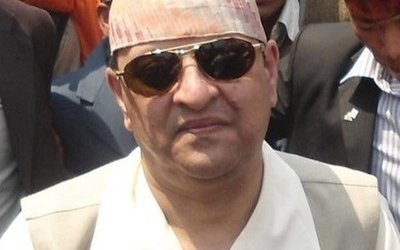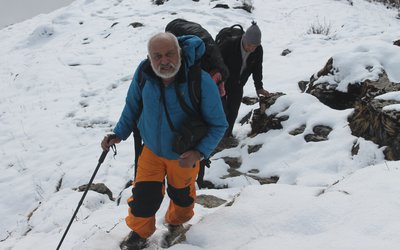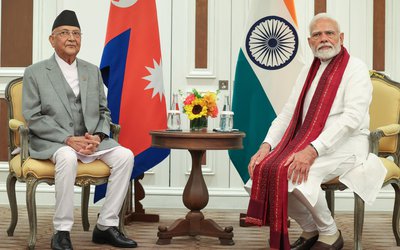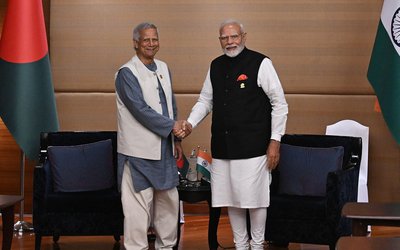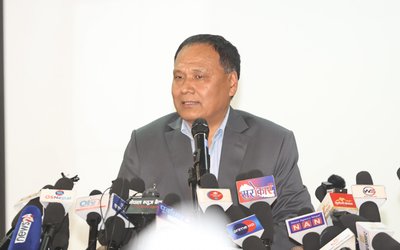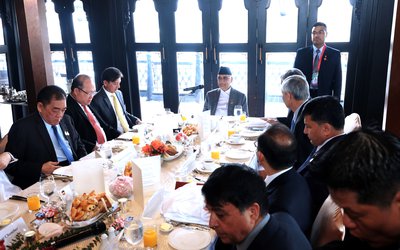Over the last decade, countries in Asia and the Pacific have witnessed many large scale disasters. Though each of these events had unique characteristics, there are common lessons that can be learned from their recovery efforts.
ADB has provided significant assistance to countries in response to such events. Between 1987, when ADB approved its first disaster policy, and 2014, we approved $6.57billion for disaster response. I will make four points, based on our experience in this area.
Impact of 25 April earthquake
First, it is important to understand the social and economic impacts of the disaster.
According to ADB’s initial analysis, the Nepal earthquake could , reduce the rate of GDP growth from a projected 4.6% to 3.8% in the fiscal year ending in July 2015. If the supply-side disruptions intensify in the coming weeks, growth could drop to between 3% and 3.5%.
In fiscal year 2016, agricultural output will remain weak due to the loss of seeds, farmland, and livestock, and a weak forecast monsoon. But the industry and services sectors are expected to rebound as reconstruction gets underway, which could return GDP growth to 4.5%.
Given the substantial loss of food stocks, livestock, and farmland, livelihood recovery is particularly important. Immediate support is needed to help affected people get transitional shelters that can withstand the monsoon season, and farmers resume preparations for the rice sowing season that is to start within a few weeks.
In past disasters in the region, ADB support has emphasized the recovery of jobs and communities. Our support to the Philippines following Typhoon Yolanda in 2013 included cash-for-work programs, the provision of inputs and equipment to farmers and fisher folk, and the restoration of basic social services to severely affected communities.
Let me emphasize the importance of adopting an inclusive approach for recovery.
After the 2005 Pakistan earthquake, ADB made efforts to involve women and other vulnerable groups in housing reconstruction. As a result, 16% of the reconstructed houses were owned by women heads of household. In a deeply conservative region, women now hold land titles, own homes and, as a result, enjoy a higher status in their communities.
Disaster risk situation in Nepal
My second point is that we need to understand the scale and nature of disaster risk.
We all know Nepal is highly vulnerable to natural hazards, such as earthquakes, landslides, and floods. A study undertaken by JICA in 2002 for Kathmandu Valley estimated that an 8.0 magnitude earthquake could heavily damage 21% of the building stock.
We should also recognize that extreme climate events are already costing an estimated annual 1.5% to 2% of GDP. An analysis of the future impacts of climate change on water-induced disasters found an increased risk of flood and landslide related damage costs.
The government had made positive efforts in disaster risk management in recent years. These include the National Strategy for Disaster Risk Management, 2009 and the Nepal Risk Reduction Consortium, which is supported by ADB, the World Bank, UN Agencies, and the Red Cross.
This national strategy has brought concrete benefits. For example, an ADB supported Flagship Project on safe schools has retrofitted 160 public schools in the Kathmandu Valley. I am happy to report that all these schools withstood the earthquake and the aftershocks. In fact, many are providing shelter for the affected communities.
However, the scale of disaster this time is substantial and will require a significant coordinated response.
Building back better
My third point is that we need to ensure that the recovery process results in higher disaster resilience, both physically and institutionally.
The reconstruction process should adopt an all-hazards approach in all relevant regards. Planning should encompass the entire affected area and include proper site selection for relocation. Application of building codes, selection of hazard resilient housing and infrastructure designs, and capacity building on safe construction are equally important.
As we know from another study, 60% of housing stocks in Nepal are semi-permanent or temporary. Housing standards in most cases do not follow the building regulations.
We need to view this earthquake recovery as an opportunity to strengthen building by-laws, where needed, and strengthen capacities for enforcement.
It is also important to look at land use planning for both urban and rural areas.
For example, after the 2001 Gujarat Earthquake in India, ADB supported the reconstruction of 42,000 earthquake resistant houses, water supply, and 3,600 km of district roads. By linking these with improvements brought about by area wide planning and land use zoning, future vulnerability was reduced.
Policy, Institutional set-up and governance for recovery
My fourth point concerns the need to strengthen policy and governance, and put in place a strong institutional set up to lead the recovery.
We should also see this disaster as an opportunity to strengthen the country’s institutional set up for disaster risk management.
Many countries in Asia and the Pacific – India, Pakistan, Sri Lanka, Indonesia, have seized the opportunity of large scale disaster events to do just that. For example, India’s Disaster Management Act, 2005 was enacted soon after the 2004 Indian Ocean Tsunami.
Nepal’s National Strategy for Disaster Risk Management already proposes a new institutional set up for disaster risk management. These recommendations need to be implemented through the enactment of the new Disaster Management Act.
For the current recovery efforts, there are examples of various institutional models from the region.
For example, following the 2004 Indian Ocean Tsunami, Indonesia established a new interim (2005-2009) focal agency (BRR) with a specific mandate to coordinate the recovery process. Similar arrangements were put in place after the 2001 Gujarat Earthquake and the 2005 earthquake in Pakistan.
The choice of model should be guided by the scale of the disaster and the existing capacity at central and local level. Strong leadership; appropriate legal mandate; and the power to innovate and reform bureaucratic procedures are critical for success.
In view of the government’s severe human resources constraints, the agency leading recovery should explore the opportunity to outsource beyond the public sector.
Strong financial management systems also need to be put in place. Nepal is experiencing sudden inflows of large amounts of money, goods, and services and is under pressure to deliver aid quickly. This could heighten the risk of corruption.
In Aceh province in Indonesia, which was devastated by the 2004 Indian Ocean tsunami, ADB supported fiduciary oversight arrangements, including the establishment of internal control and audit systems, and capacity building for the Supreme Audit Institution.
To support transparency of aid flows after the tsunami ADB also supported the development of a regional web-based tracking system, known as the Development Assistance Database, for Indonesia, Maldives, Sri Lanka, and Thailand. The database captured information on what work was being done and planned; who was undertaking the work; what measurable results were expected; and the source, amount, and status of financing.
Such examples will be helpful in this case too.
Conclusion
This is the biggest disaster Nepal has every faced. Despite being in a state of trauma, the people want to rebuild a stronger community. Learning from the past, the government is equally committed to build trust and emerge as a more resilient nation.
ADB will continue to work closely with the Government of Nepal and other development partners, with government at the helm, in responding to the earthquake. And we will apply a flexible approach to help meet rapidly evolving needs.
Excerpts of the statement delivered by ADB Vice President Bindu Lohani at "Build Back Better” Reconstruction Seminar for Nepal, organized by the Japan International Cooperation Agency (JICA) on 25 May, 2015 in Kathmandu, Nepal. Lohani is vice-President Knowledge Management and Sustainable Development.
- Build Back Better Nepal
- Jun 14, 2015



